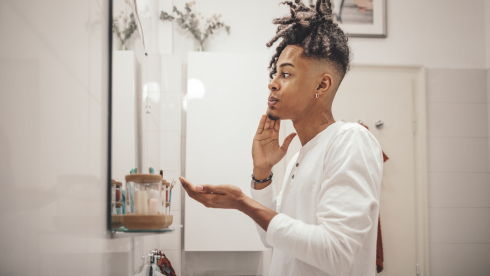I’m staring at the ancient rock-hewn faces of Buddhist lords at a temple in Angkor when I get the distinct feeling that I’m being stared at too. A smiling Cambodian woman comes up to me gesturing with her camera. I smile back because I know exactly what she wants. I pose for a picture and wind up taking a photo with her entire family, from oldest to youngest. I wonder how they’ll explain the Black woman in their family vacation photos.
Being somewhat of a cultural curiosity comes with the territory when traveling while Black, but I love the attention. I hope I’ve left them with a positive impression, because I’m definitely impressed with their corner of the world. Besides, turnabout is fair play, right? I’m just as curious about them and their culture—which is why I’m visiting Angkor Wat, one of the most amazing architectural sites in the world, just outside Siem Reap in Cambodia.
RELATED: FIND ZEN IN SOUTHEAST ASIA [PHOTOS]
Bayon Temple, the site of my unexpected photo shoot, is one of the stars of Angkor Thom, known as the “Great City” and constructed by an ambitious Khmer ruler in the 13th century. The omnipresent identical faces adorning its 37 rock spires keep a watchful eye over what was to represent the center of the universe, and I can see why: the place is definitely awe-inspiring, raising more questions than answers. My friends and I wonder who could have carved these enormous symmetrical portraits, and how?
Symmetry seemed to be an important feature to the architects of Angkor, the seat of Khmer power from the ninth to the 15th centuries. The World Heritage site stretching over 150 square miles features hundreds of temples in various states of unyielding decay and ongoing restoration. It’s at the doppelgänger temples of Thommanon and Chao Say Tevoda that I have another close encounter of the cultural kind. A little girl, probably around 10, falls in step with me carrying a basket of woven bangles.
“I like your hair,” she says in a singsong voice, referring to my cornrows. She adds, “You look like Michelle Obama.”
My skin complexion may evoke FLOTUS, but that’s about all as far as I can tell, so I wonder if the compliment is just the mini salesgirl’s ploy to get me to buy her bangles. I decide that I don’t care what her motives are. She’s cute. I’m flattered and I buy a wrist full of her wares.
With a comparison to the First Lady still ringing in my ears, I can’t help but embrace a feeling of girl power at Ta Prohm, while standing on the spot where Angelina Jolie portrayed the intrepid adventurer Lara Croft in Tomb Raider. The Cambodian jungle has practically over taken the temple. At moments, the crumbling site (upended by tree roots) is over run by tourists. But when the crowd subsides, the place is sublimely serene and shrouded in mystery. Dappled sunlight breaks through the trees to reveal intricately carved structures covered in creeping moss. It’s hauntingly beautiful, and one of the highlights of our visit.
But the crown jewel of Angkor is Angkor Wat, of course: the largest religious building in the world, a temple that is a city, and a masterpiece of architecture and symbolism. Our tour guide, a slight Cambodian man in khakis, shares some of his own cultural observations before we enter, suggesting that the way people tour Angkor is a nod to their nationalities. Europeans and Americans like to arrive by tuk-tuk, those little ubiquitous three-wheeled vehicles; the Chinese and Japanese arrive in large tour buses; while the Koreans prefer not to tour the site all, taking pictures and sitting in the shade as they scoop coconut pulp from shells with a spoon. I guess we’re all curious creatures to one another.
We melt into this mix of cultures on the packed paths leading into Angkor Wat ready to be amazed and awed. We walk across the 623-foot-wide moat, through one of five doors designated for royals, peer into pits that were once pools for washing away sin, and marvel at delicately carved gods and goddesses. When we climb to the pinnacle of the temple and survey the grounds below, we contemplate what it must have meant to be at the top of this expertly crafted microcosm of the universe. It feels huge and at the same time unimaginable, and I’m sure the feeling’s universal.—Robin Bennefield
Robin Bennefield is a freelance writer and web producer based in the Washington, D.C. area. She writes frequently for TravelChannel.com and chronicles her travels on her blog, RobinsHaveWings.com. She posts highlights on Twitter and Instagram @RobinsHaveWings.













